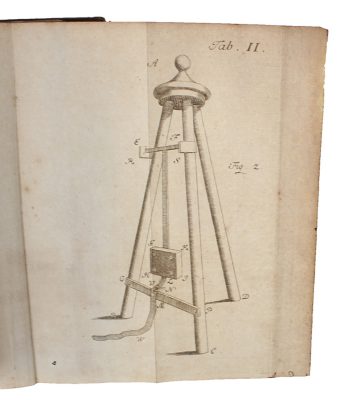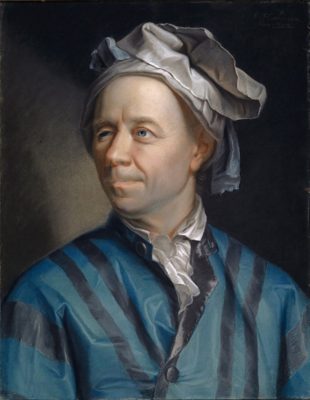Anyone who visited the "Travel Reports of a Pioneer" exhibition this summer on the 250th anniversary of the birth of GF founder Johann Conrad Fischer was able to view this new acquisition in detail in the display case in the Ernst Müller Room of the Iron Library. The book is a small but hefty tome and of particular importance for the history of applied Newtonian mechanics. It is one of three titles in our collection by Leonhard Euler, whose "Algebra" Johann Conrad Fischer took with him on his journeyman travels in 1794.
Leonhard Euler is one of the most famous mathematicians in history. He grew up in Basel and studied mathematics at the university there. At the age of twenty, he followed a call to St. Petersburg to the Academy of Sciences, where he taught physics and mathematics. In 1741 he accepted an offer from Frederick II of Prussia (1712–1786) and worked for the next 25 years as director of the mathematical class of the Prussian Academy in Berlin. In 1766 he returned to St. Petersburg. Euler saw the world around him in numbers and their relationships, and his discoveries defined the terminology and notation still in use in mathematics today. Over the course of his life, he also published on engineering, physics, astronomy, optics, and music theory.
Although considered one of his most impactful works, "Neue Grundsätze der Artillerie" was not entirely penned by him. The work grew from Euler's translation of another book first published in English in 1742 by Benjamin Robins (1707–1751). Robins book "New Principles of Gunnery" took a completely revised view of the theory and practice of artillery, and applied to them the principles of Newtonian mechanics. The aim was to improve the accuracy of great guns through considerations of velocity, air resistance, and the strength of gunpowder, for which he designed a special measuring device – a ballistic pendulum. The book had an economical objective too. Through optimizing artillery, waste was reduced, resources were saved and the overall financial burden of military operations decreased.
Euler completed his translation for King Frederick II of Prussia, who went down in history as Frederick the Great because of his military successes. The Iron Library's exemplar has its provenance in the library of Frederick the Great's contemporary - another king Frederick, in this case Frederick V of Denmark, as shown by the stamp within and supralibros on the cover of the binding.
Euler's book took Robins' ideas, expanded them with his own critical observations, and improved or added mathematical theorems to the extent that the "translation" turned out almost five times the length of the original. For this reason, it is more frequently referred to as "Eulers Erläuterte Artillerie" or "Euler's Expanded Artillery". It is, in retrospect, much more than a book on artillery, however. The considerations for the applied Newtonian mechanics, and factors such as wind resistance, contributed to the foundations of practicable aerodynamics and the mathematics that are to this day still applied in the aerospace industry. In this way, it is not only an important addition to the library's established holdings on artillery, testing, mathematics and physics, but also the history of flight.



